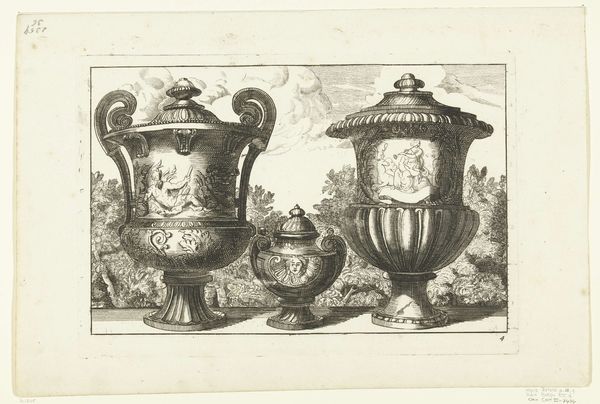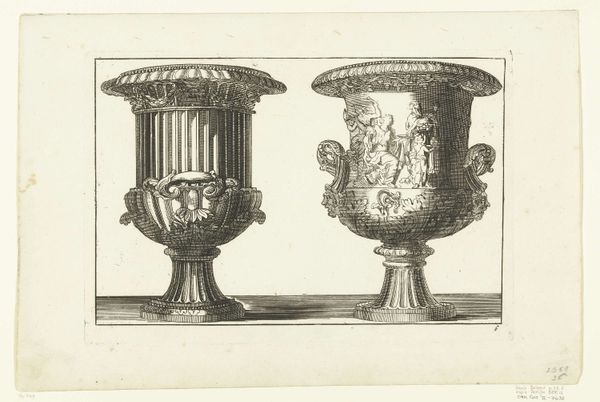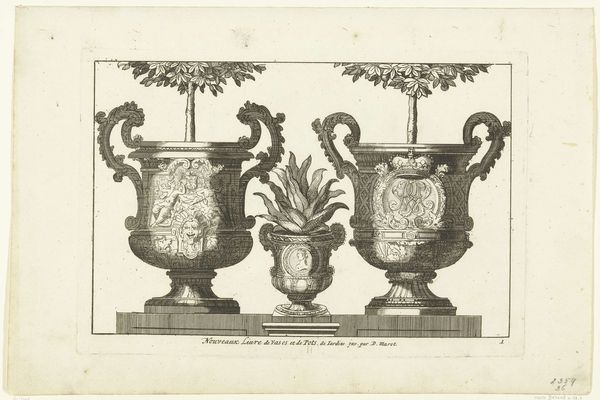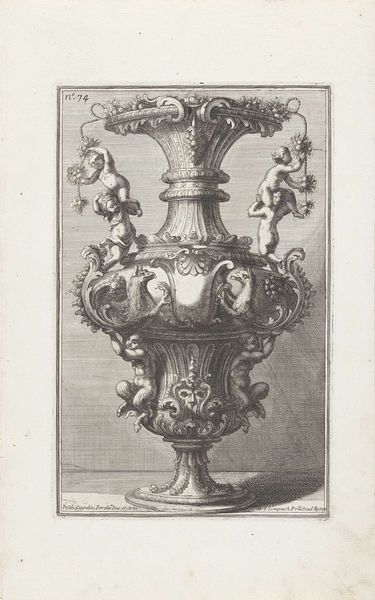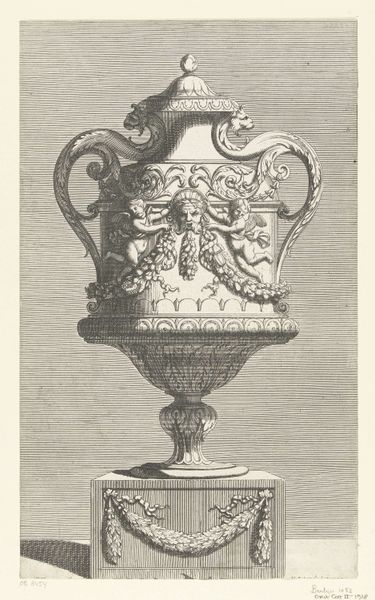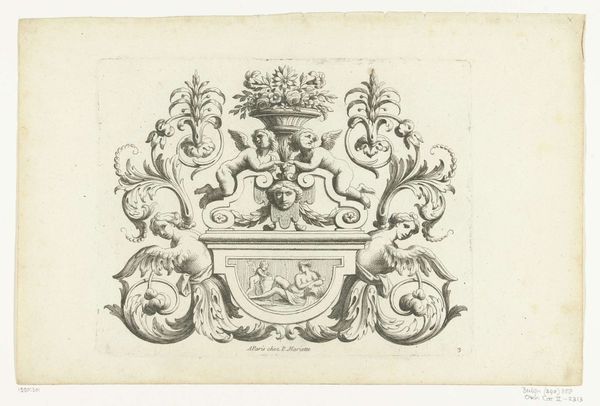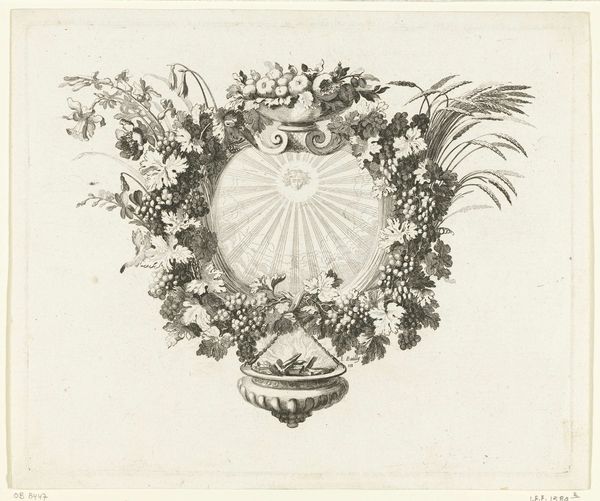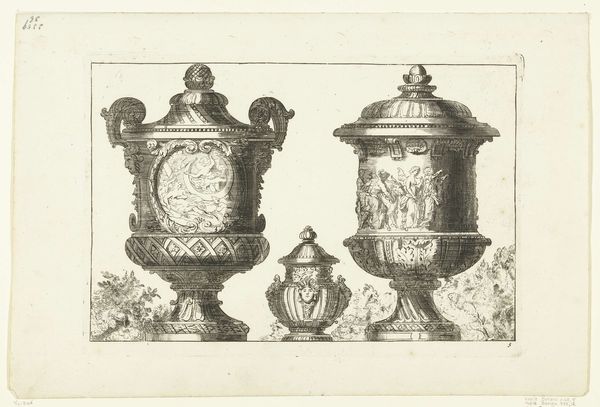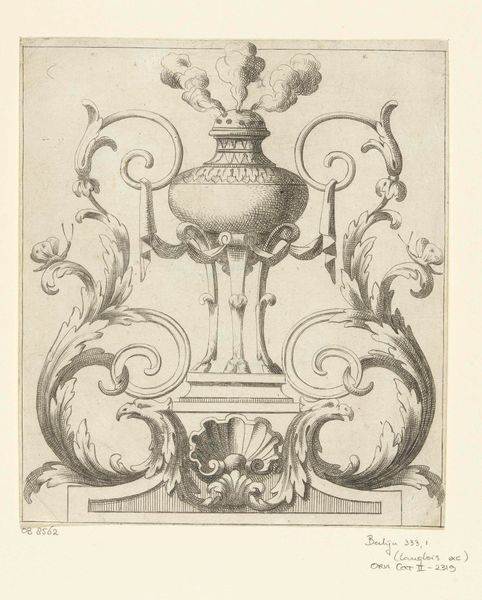
drawing, print, ink, engraving
#
drawing
# print
#
ink
#
decorative-art
#
engraving
Dimensions: height 187 mm, width 272 mm
Copyright: Rijks Museum: Open Domain
Editor: We're looking at "Twee grote vazen en een kleine vaas," or "Two Large Vases and a Small Vase," a pre-1800 engraving in ink by an anonymous artist. There's such meticulous detail, particularly in the figures adorning the vases. I wonder, what stories do these vases tell you? Curator: Well, consider the context. This piece predates 1800, a time steeped in social hierarchy and elaborate symbolism. These vases, particularly in their decorative excess, reflect a desire to communicate status and power, especially the figures depicted on them. They suggest stories of mythology, idealizing strength or beauty. Can you see how these classical references work as legitimizing forces, subtly reinforcing a particular social order? Editor: I see what you mean. The classical imagery creates a sense of established authority, which, when placed on objects like vases, brings that sense of authority into the domestic sphere. So, it's more than just decoration, right? Curator: Exactly! Think about who would commission or own such a piece. It wasn't accessible to everyone. This engraving, likely made to circulate designs, became a tool for disseminating these symbols of power, even aspirational symbols, throughout different social circles. How might this kind of visual language shape contemporary notions of class and taste? Editor: It's fascinating to think about how these images, even in a seemingly simple decorative piece, reinforce existing power structures and social ambitions, isn't it? Curator: Indeed. It pushes us to question what is being communicated beyond the aesthetic, and how art becomes a participant in larger social and political narratives. Editor: Thank you, this has changed how I think about decorative arts. I hadn’t considered its impact on social narratives before!
Comments
No comments
Be the first to comment and join the conversation on the ultimate creative platform.


